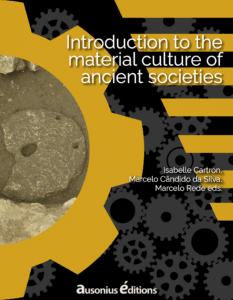UN@ est une plateforme d'édition de livres numériques pour les presses universitaires de Nouvelle-Aquitaine
Auteur : André Miatello

Universidade Federal de Minas Gerais
Av. Presidente Antônio Carlos, 6627
31.901-270 Belo Horizonte
Brazil
andremiatello@ufmg.br
0000-0002-1254-8837
andremiatello
Av. Presidente Antônio Carlos, 6627
31.901-270 Belo Horizonte
Brazil
andremiatello@ufmg.br
0000-0002-1254-8837
andremiatello
André Miatello is a Historian with a PhD from the University of São Paulo (2010) and is a Professor of Medieval History at the Federal University of Minas Gerais. His doctoral thesis was published in 2013 under the title “Santos e Pregadores nas Cidades Medievais Italianas” by Fino Traço. He is currently studying Mediterranean Christianity in the late antique and medieval periods, covering the interaction between ecclesial communities, urban centers and mystical movements between the 11th and 15th centuries.
References
- Miatello, A. (2023): “A devoção das eremitas: carisma e corpo nas comunas italianas (séc. XIII-XIV)”. Anos 90 Revista do Programa de Pós-Graduação em História, 30: 1-18. https://doi.org/10.22456/1983-201X.119309
- Miatello, A. (2023): “As culturas da caridade das Beguinas de Marselha frente aos desafios da economia mercantil da Baixa Idade Média”. Revista de História da USP, 181: 1-20. https://doi.org/10.11606/issn.2316-9141.rh.2022.193257
- Miatello, A. (2020): “A literatura mística feminina e a escrita da História na Baixa Idade Média ocidental”. Revista História da Historiografia, 13(33): 163-195. https://doi.org/10.15848/hh.v13i33.1519
- Miatello, A. (2020): “Formas de participação política nas comunas italianas medievais”. Phoinix, 25(1): 109-123. https://doi.org/10.26770/phoinix.v25.1.n6
- Miatello, A. (2019): “The Polysemy of the “crisis” of medieval cities in the historiography of the nineteenth and twentieth centuries”. Mélanges de l’École Française de Rome – Moyen Âge, 131(1). https://doi.org/10.4000/mefrm.5242
As mulheres místicas (©Estudos Medievais, 03/2023).
Keywords
Medieval History, Cities, Religion, Politics, Political Cultures, Mystics
par André Miatello
In the seventh century, Isidore of Seville (Etymologiae, XV, iii) defined habitation [habitatio] as having [habere] a place to live, which could be a ‘casa’ (i.e., a rustic hut), a ‘domus’ (the residence for a single family), an ‘aula’ (the royal residence) or an ‘atrium’ (a large and spacious dwelling).
par André Miatello
Archeological excavations and aerial revelations show that the larger villae continued to develop until the 5th century, while the smaller ones were abandoned between the 2nd and 3rd centuries.


